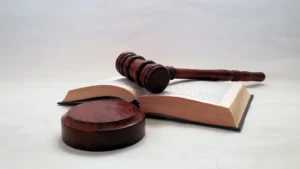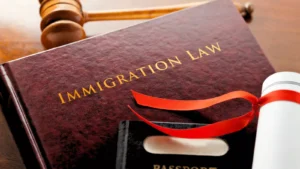
The media’s portrayal of crime undoubtedly holds a powerful grip on public opinion. In Part 1of this article, we dissected the common tropes used in media representations – a focus on the violent, the bizarre, and the potential for triggering moral panics. We also acknowledged the critical role media criminology plays in helping law students understand the disconnect between media portrayals and the realities of crime.
In Part 2, we’ll delve deeper into the notion of the “media trial.” We’ll analyze the profound impact of media coverage on the presumption of innocence, especially in high-profile cases where intense scrutiny can sway public opinion even before formal proceedings begin. Importantly, we’ll examine specific instances where media portrayals have potentially posed challenges for the victims. This article underscores the crucial need for law students to understand this interplay between the media and justice – to protect the integrity of trials and to advocate for reforms that ensure fairness for all.
Media Trials and the Court of Public Opinion for Victims

Sensationalised reporting of crimes can also have a significant negative impact on victims, particularly during court proceedings.
Challenges for Victims:
- Public Scrutiny: Extensive media coverage can thrust victims into the spotlight, reopening emotional wounds and exposing them to public scrutiny. This can be particularly detrimental for victims of sexual assault or violence.
- Victim Blaming and Shame: Media narratives may unintentionally focus on the victim’s actions or behaviour, leading to public victim-blaming and shaming. This can discourage victims from coming forward and seeking justice.
- Privacy Concerns: Repeated disclosure of sensitive details about the crime and the victim’s personal life can be a violation of privacy, adding to the distress of the victim and their family.
- Prejudicial Coverage: Biased media reports that highlight sensational details or portray the accused in a certain light may influence public opinion and potentially prejudice the judge.
- Retraumatisation: Reliving the traumatic experience through media coverage can be retraumatising for victims, especially if the reports are insensitive or graphic.
While India has no specific legislation governing media coverage of crime victims, existing laws offer some protection:
- Right to Privacy: The Right to Privacy, recognised under Article 21 of the Indian Constitution, can be invoked to limit the disclosure of a victim’s personal information.
- Contempt of Court: Publishing information that prejudices a fair trial can be considered contempt of court.
- Press Council of India (PCI) Guidelines: The PCI has issued guidelines promoting responsible media reporting, including on cases involving victims of crime.
Recent Cases and Potential Prejudicial Impact
Alt: Famous Media Trials in India
- The Sushant Singh Rajput Case (2020): This highly publicised case saw relentless media coverage filled with speculation, accusations, and focus on individuals surrounding the actor’s death. This created a climate of pre-judgement and made a fair, unbiased investigation difficult.
- The Jessica Lal Murder Case (1999): The initial acquittal of the accused sparked massive public outcry and sustained media pressure. This ultimately led to a retrial and conviction, raising questions about whether the judicial process was unduly influenced by the media frenzy.
- The Aarushi Talwar Murder Case (2008): This case saw conflicting media narratives and theories about the suspects. The intense scrutiny prejudiced public opinion and may have influenced the initial convictions (later overturned on appeal).
How Media Trials Can Sway Judicial Opinion?
- Public Pressure: Judges are human and may not be entirely immune to widespread public sentiment fueled by biased media reporting.
- Risk of Pre-judgement: Constant media focus on a case can create a perception of guilt before the accused has had a fair chance to defend themselves in court.
- Tainting the Jury Pool: In potential jury trials (abolished in India in 1958), media narratives can contaminate the jury pool, compromising an unbiased juror selection process.
The Public Interest vs. Fair Trial Debate
The media plays a vital role in keeping the public informed and holding power to account. However, this must be balanced against the fundamental right to a fair trial.
- Arguments for Media Freedom: Investigative journalism can uncover crucial information. Public scrutiny can ensure cases aren’t forgotten or swept aside.
- Arguments for Fair Trials: Judges must base their decisions solely on evidence, not public sentiment. Presumption of innocence is vital. Sensationalised reporting can compromise investigations and put undue pressure on all involved in the case.
Law students must be aware of the delicate balance between public interest and individual rights. The media can be a powerful tool for justice, but responsible reporting and a judiciary firmly committed to impartiality are essential.
Conclusion
In an era where information flows constantly, understanding the media’s role in shaping our views on crime and justice is more crucial than ever. BA LLB students are advised to study media criminology carefully to navigate this complex terrain. They need to confront crucial questions:
- Responsible Reporting: Where do we draw the line between the public’s right to know and an individual’s right to a fair trial? Can media outlets uphold ethical reporting standards in the pursuit of sensationalised stories?
- Protecting the Vulnerable: How do we safeguard victims from further trauma caused by media scrutiny without hindering freedom of the press?
- The Judiciary’s Role: Can judges truly remain impartial when public sentiment is heavily influenced by the media narratives?
- Can They Be Change Agents? Can future lawyers use their understanding of media criminology to advocate for victims’ rights, sensible media regulation, and a justice system that upholds the presumption of innocence?
The answers aren’t easy. But, by grappling with these questions, BA LLB students at SMS Law College can become the architects of a judicial system where true justice prevails, even in the face of the ever-present “court of public opinion.”




